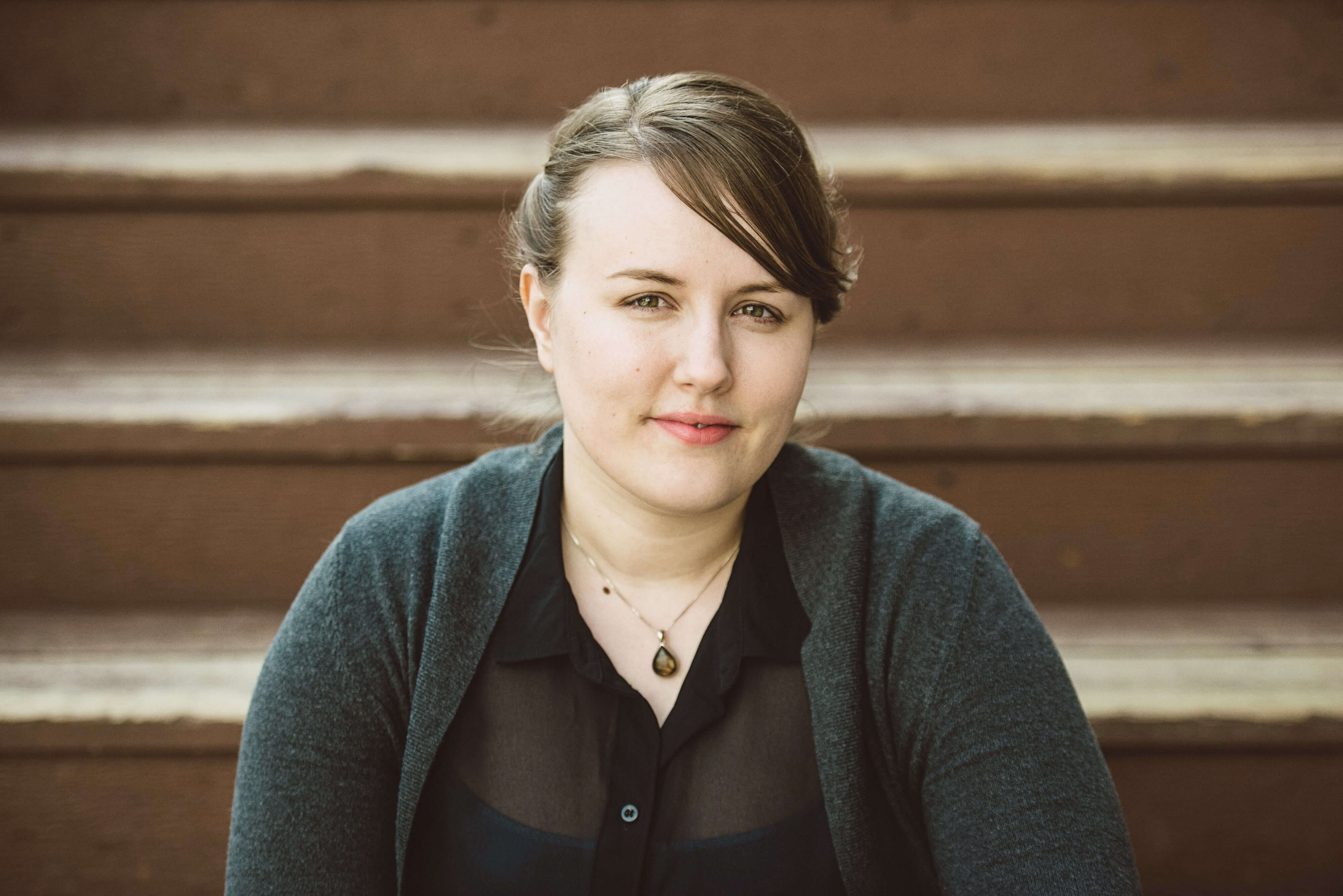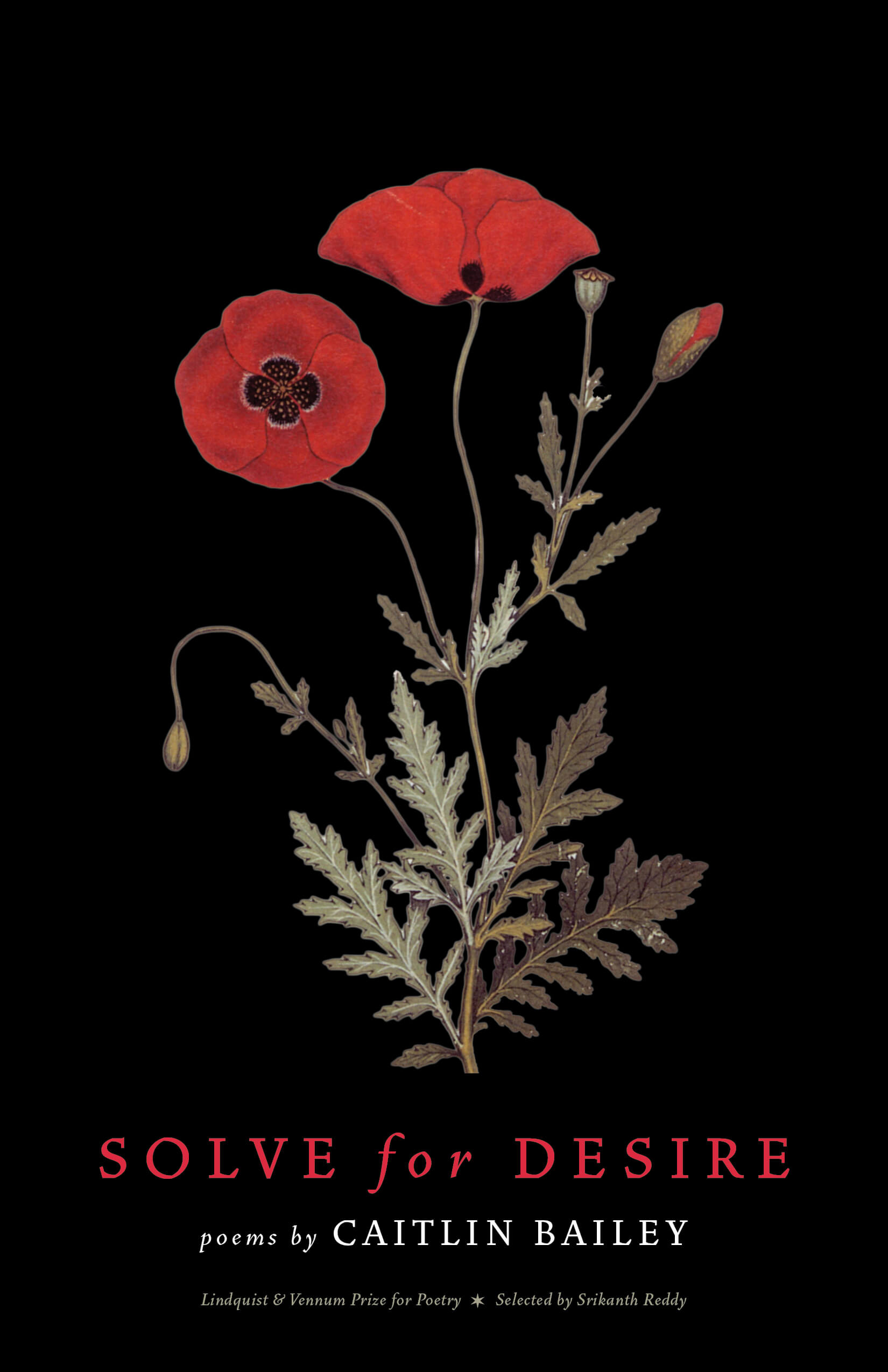Interview: Caitlin Bailey

Photo credit: Lucas Botz
Midwestern Gothic staffer Marisa Frey talked with author Caitlin Bailey about her collection Solve for Desire, the driving force of unavailable information, researching for poetry, and more.
**
Marisa Frey: What’s your connection to the Midwest?
Caitlin Bailey: I grew up in Minneapolis, went to school in the Twin Cities, and now live in St. Paul, so my identity is firmly rooted in Minnesota. I love living here, and can’t really imagine living elsewhere.
MF: How does living in Minnesota influence your writing?
CB: I feel really lucky to be a part of the writing community in the Twin Cities. I think we’re fortunate to be surrounded by so many amazing writers—both new and established—here in Minnesota. In addition to being in the midst of such talented writers, we have wonderful arts organizations here. The Loft Literary Center, Minnesota Center for Book Arts, our amazing local presses, the folks who organize and run amazing reading series all over town—all of this adds so much to the experience of being a writer in Minnesota.
MF: Solve for Desire is your debut collection. How long did it take to write, and what was the process like?
CB: I’ve been working on this book for a long time! I wrote the bulk of the poems during graduate school and during the three years after it. Originally, I wasn’t sure how the poems I was writing about the Trakls would fit with the other poems I was writing. I’d set my original manuscript up in sections, separating the Trakl poems from my other work entirely. That arrangement wasn’t working; it felt uneven. In the end, I found that the poems I’d written without thinking specifically of Grete were speaking to similar concerns about desire and loss. Once I blurred the lines between the poems, something seemed to click.

MF: Solve for Desire explores the relationship between the siblings Grete and Georg Trakl—an Austrian pianist and poet, respectively—from the early 1900s. What drew you to writing about them, and focusing on Grete?
CB: When I started writing this book I was actually working on a series of poems about Miklós Radnóti, a Hungarian poet, and a friend of mine suggested that I look at Georg Trakl’s poetry in conversation with Radnóti’s. I quickly became obsessed with Georg and his sister, Grete.
When I started researching Trakl’s life, I was immediately drawn to Grete’s story, which was significantly less fleshed out than Georg’s. Some of my other work from that time was considering the erasure of women’s inner lives from history. Grete was known just as Georg’s sister, but I wanted to explore how she existed in the world as a human who was more than Georg’s sister—who had a rich inner life of her own.
I discovered that no correspondence between Georg and Grete is publically available, and that their letters to each other may have been destroyed. This seemed like a loss to me, but it was also an invitation. I wanted to know what their letters might have said, and it sort of haunted me that I might never know. That was the original impetus to begin writing these poems, and I started writing a series of imagined letters and persona poems in Grete’s voice.
MF: What is the relationship between playing the piano—Grete’s art form—and writing a poem?
CB: I played piano for years as a kid, and I think you can get lost both in writing a poem and playing a piece of music. There’s a sense of discovery and possibility in both kinds of art; writing a line that’s really working is a bit like finally playing a song effortlessly.
MF: How did you go about researching for the collection? When did you rely on fact and when did you rely on your imagination?
CB: I don’t speak German, so researching for the collection was definitely a challenge. Most Trakl biographies are written in German, but I bought any book on Trakl in English I could find. Most translated collections contain some biographical information, and I was able to find a few other books with a fair amount of information about Georg and Grete. Researching was also challenging in that not all sources agreed on basic facts. It’s unclear whether Georg’s death was a suicide, or at what age certain events occurred. I tried to be accurate when possible, but I also had to accept that I wasn’t going to have all of the facts.
I used the outlines of the Trakl’s lives as the backbone for the poems, but I expanded on what I could find and imagined some situations. For example, in the poem “Wild Boat,” I write that Georg died in Poland, which is true. The rest of the poem is an exploration of how Grete might have dealt with Georg dying. In “The Pond,” I write about a time when Georg was very young and walked into a pond. He almost drowned, and was only saved because someone spotted his hat floating on the water. I found brief mentions of this incident in books, but I imagined what it might have been like for Grete to observe and consider this incident and its implications.
MF: The collection began as an imagined letter from Grete to Georg. What are some challenges and benefits of writing a persona poem?
CB: I’ve always been drawn to research in the service of poetry, so persona poems are especially intriguing to me. I didn’t want these poems to be sensational, so I spent a lot of time thinking about how I could make them feel true. In Grete’s case, I didn’t have any source material to work from, so I was starting from scratch. Projecting my own feelings and desires onto someone else’s life isn’t something I did lightly, but my goal in writing these poems was to honor Grete.
MF: What inspires you to start a poem?
CB: Generally, I write poems in two ways. One way I start a poem is with a specific idea/person/event, like in some of my poems written about Grete and Georg. If I have something specific I want to convey, that can help me structure my writing. The other way I typically start a poem is with a particular line or image. Sometimes I’ll use a line written months or years ago and write from that. This way of writing a poem is much more open-ended, and where I find myself beginning lately.
MF: What is the best advice about writing you’ve ever received?
CB: Read more. Whenever I feel stuck in my own writing, I read. I have old favorites I can return to, but I’m always looking for new writers, too. When a poet does something with language that I find exciting it motivates me to write.
MF: What’s next for you?
CB: I spent the last couple of years editing and rewriting Solve for Desire, so I’m excited to work on some new poems. I’m in a space now where my next project is completely unknown, and that’s kind of exciting.
**
Caitlin Bailey is the author of Solve for Desire, winner of the 2017 Lindquist & Vennum Prize for Poetry, selected by Srikanth Reddy. Her poems have appeared in Prairie Schooner, Hayden’s Ferry Review, Carolina Quarterly, Verse Daily, and elsewhere. The recipient of a Loft Mentor Series award, she received an MFA from Hamline University and lives in Saint Paul, Minnesota.






